-
Posts
270 -
Joined
-
Last visited
Content Type
Profiles
Forums
Store
Help Articles
Posts posted by Baron d'Apcher
-
-
Clarifying a liquid that has enough gelatin to support a terrine is not recommended. It will probably burn at the bottom or make a mess and be very difficult to strain. Reducing a clarified liquid will only make it cloudy. While it is entirely possible to fabricate a stock entirely through natural gelatin (use a calf’s foot –generally available at any Latino market) it will not be clear or clean tasting. Gelatin has a relatively neutral taste.
Ruhlman’s book is a cursory introduction but in no way a resource that deserves the reverence it has somehow achieved. The brine percentages are far too high, gravlax recipe is likely sponsored by sugar lobbyists and the gram weights are rounded up/down. The book can best be used as a weight to press terrines and the pages run through the grinder to get the excess meat out.
Agreed with "pâtés & terrines". Jane Grigson does not offer precise measurements, but is worthwhile.
-
 1
1
-
-
While sous-vide cookery has its merits (very few) using boil-in-a-bag for the purpose of making a terrine from the entire contents it contrived and a waste of plastic. Similar if not better results can be obtained by simmering the brined pork in seasoned water (salt, aromatics) until tender, clarifying the liquid with egg whites and then adding 8-10% gelatin by weight to the amount needed, as with the Randall-Lineback terrine up-thread. Excess clarified liquid can frozen and reused at a later time. Very difficult to check for tenderness with sous-vide and that method won’t generate enough liquid. And sous-vide simply has no soul. Jambon persillé should indeed be the guiding star.
Consider brining the pork, simmering, cool in the liquid, clarify, glue, dice meat and pack in a terrine with celery leaves. Alternatively, you can blend some blanched celery and/or leaves and purée them with the clarified liquid before adding the gelatin so as to create a pale green liquid evoking the celery leaves. Or you can pick/dice the meat while it is still warm and press it in a mold. It will stick together like a conglomerate, similar to boneless "Jambonneau" (pork shank, simmered, rubbed in lard and rolled in bread crumbs)
Gilles Verot. Paris, France
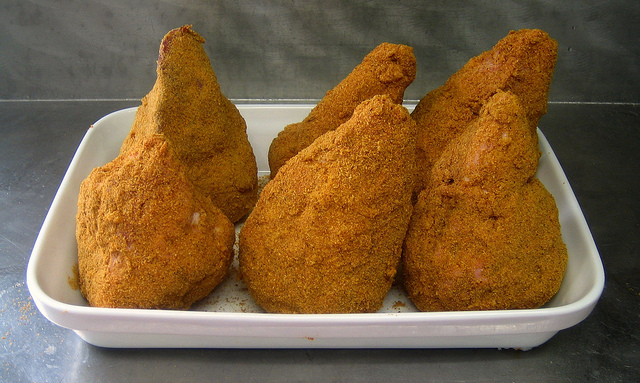
When making a chicken terrine, I blanch the poultry and simmer it in a white wine and tarragon court boullion with carrots and parsnips. The stock is clarified, “glued” with gelatin and encases the picked chicken meat, the aforementioned carrots & parsnips, gizzards, mustard seeds and celery leaves.
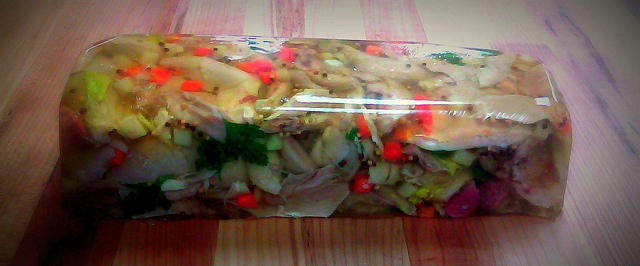
-
Salmon terrine.
Wild Alaskan king salmon and lobster. An inlay of striped bass and Old Bay. Gravad-laks (crusted with dill, fennel seed, mustard seed, lemon zest) and Madeira aspic.

Difficult to tell from the picture, but the inlay is perfectly circular and centered. Next version will have a lightening bread panade and vermouth seasoning.
-
Baron, do you add nitrite cure to your confit giblets? They look rather more pink than mine (I added cure to the forcemeat only).
Indeed. Cured for 2 days then confit in duck fat.
Berkshire pork and Randall-Lineback veal pâté
with corned veal tongue, confit heart, smoked belly, toasted Marcona almonds and gin-soaked currants.
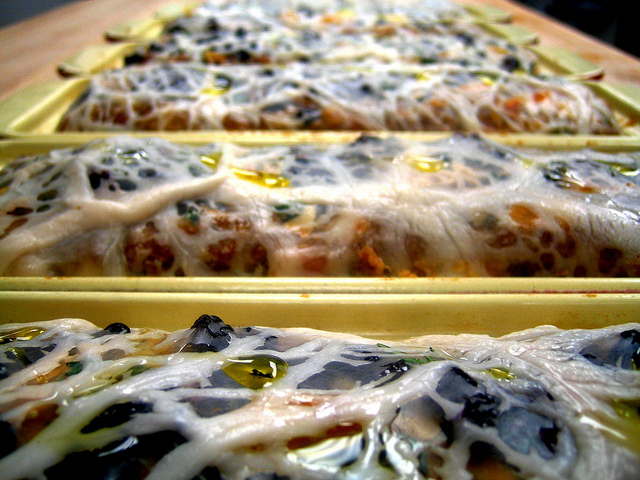
Randall-Lineback terrine. Corned cheeks, shanks, tail and brisket.
Worcestershire aspic, horseradish, red onion and salted capers. With a poached then pickled quail egg.
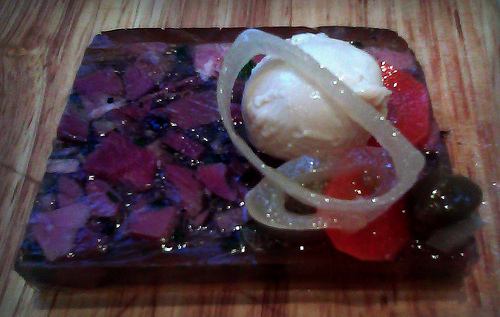
-
They are enjoyable to fabricate and a testament to passion, discipline, artistry and technique. Not perfect, but getting better.
Alina Duck, it's confit gizzards, pistachios and apricots in savory pastry.


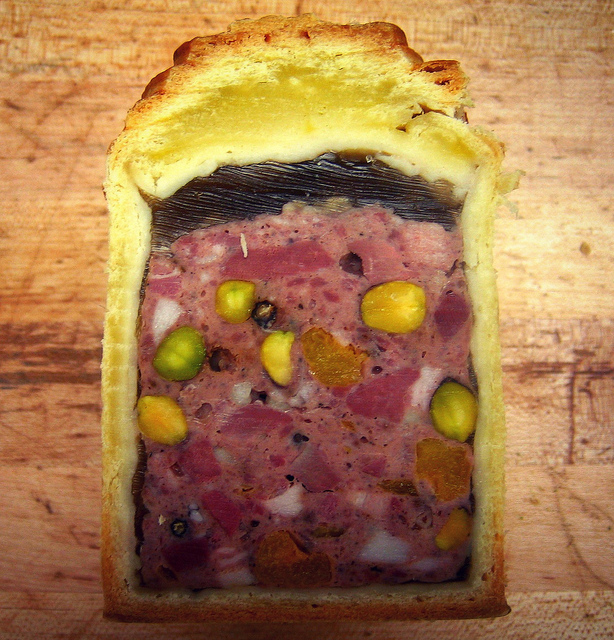
-
Well played Thirtyoneknots.
Pork and Apricot Pâté en Croûte. Pistachios, heart, smoked belly and tongue.
Precision incision.
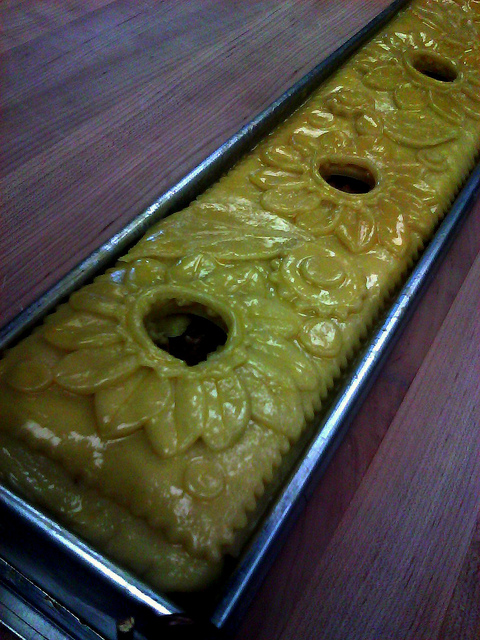
Through pastry flavored glasses
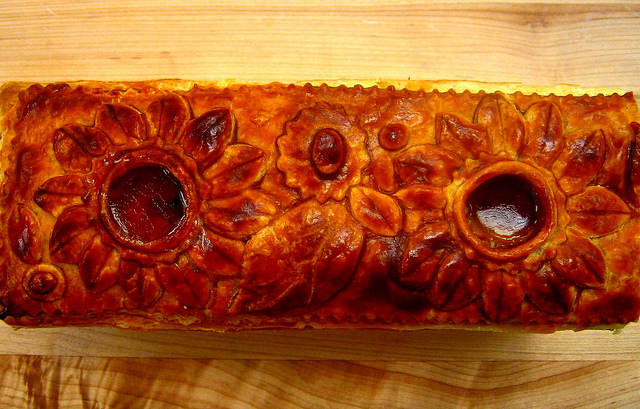
(Insert savory emoticon)
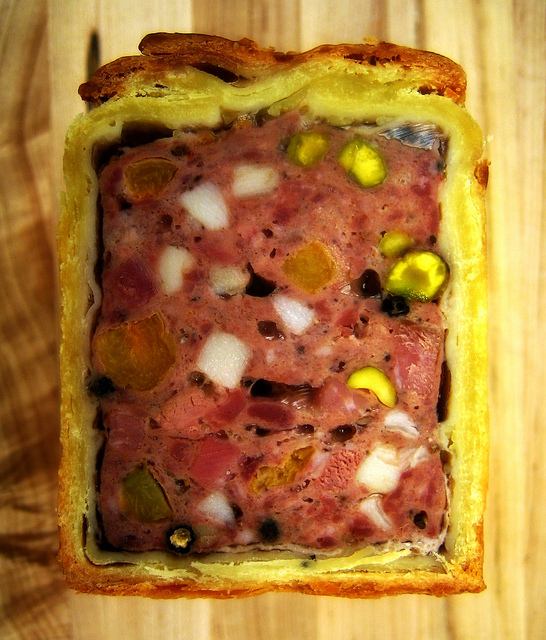
-
Duck and Sour Cherry Pâté en Croûte
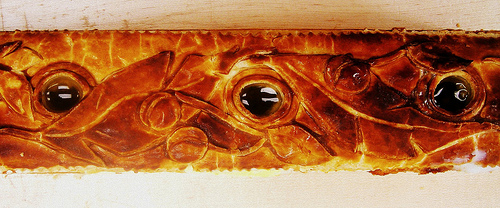
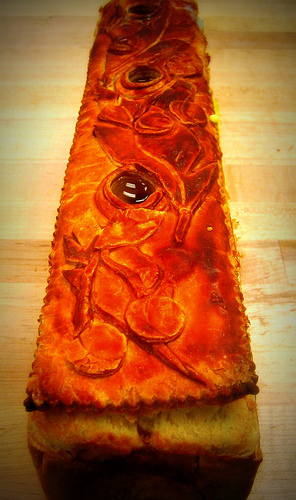
Pork Pâté en Croûte with Dried Apples Soaked in Calvados.
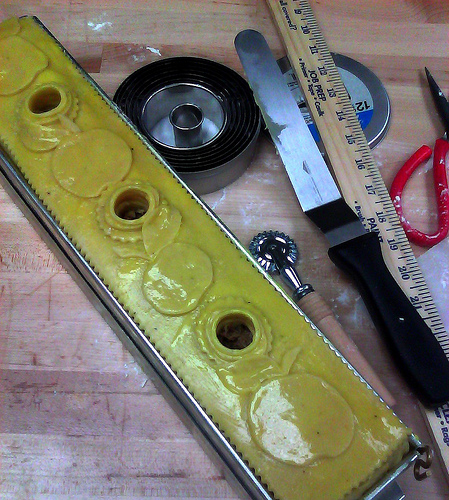
Pork Pâtés, Figs & Pistachios, Tucked in with Caul Fat and Bacon.
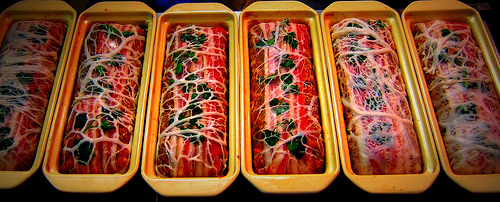
-
Pastured Virginia Angus top round. Denuded, veins cut out, barded with strips of fatback.
Starsky & Hutch style.
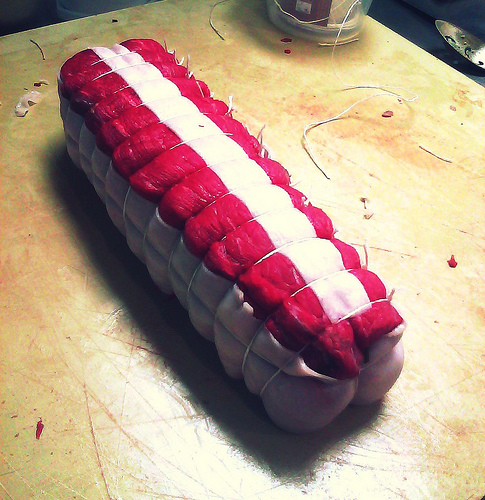
-
Inlayed Berkshire pork pâté.

Berkshire pork with confit heart, tongue, fatback and quince. Inlay of cubic zaffronia and paprika wrapped in fatback.
-
Pork and Quince Pâté en Croûte.
Berkshire pork, confit heart, tongue, cured loin, fatback and candied quince.
Object of desire.
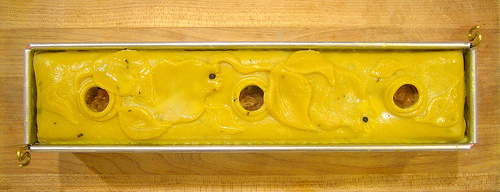
The original forbidden fruit.
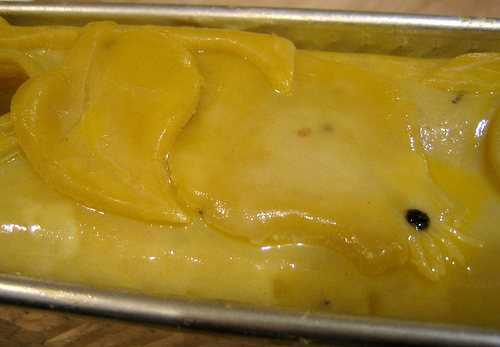
Wake & Bake.
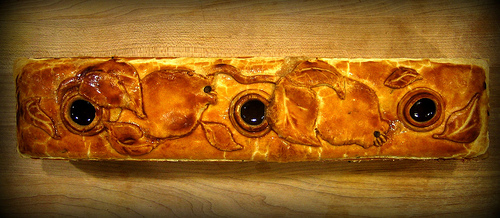
Up to the eyes in quince
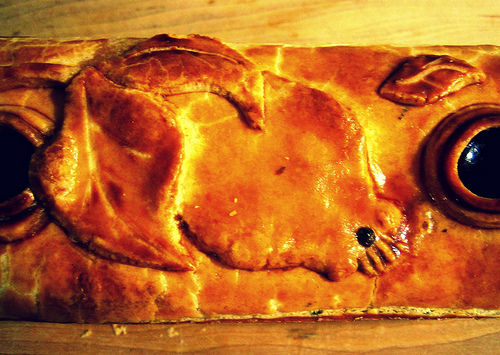
Conglomerate meat
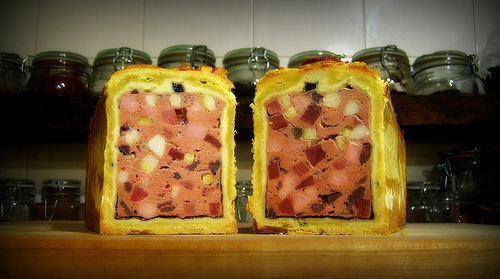
-
TG 2011 for 14 orphans
“New Frangland”

Roasted nuts and Mt. Pleasant pickles (sour Mexican gherkins, yellow wax beans). Mulled cider to be pumped.

Boston mackerel. Pickled in my red wine vinegar. Ruff & Ready salvaged cocktail forks.
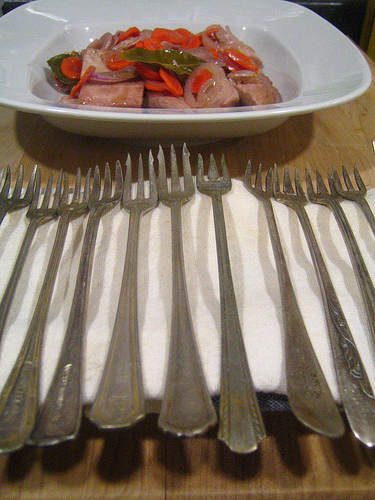
Smooth, leggy & blonde. Smoked turkey leg rillettes.
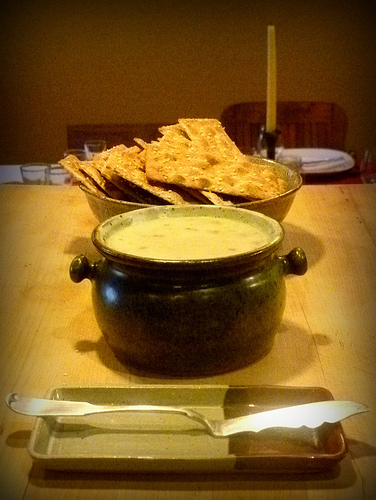
Cooked in leaf lard. Absolutely delicious.
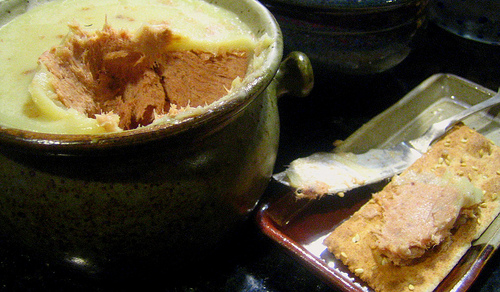
Gloucester navy bean chowder. Beans puréed with shellfish cooking liquid. A garnish of leek, bacon, shrimp, mussels, clams and salted cod.

Goldfish –acorn squash cornbread. Sea salt carousel: Persian blue, espelette, lavender, smoked, Guérande grey, Île de Ré.
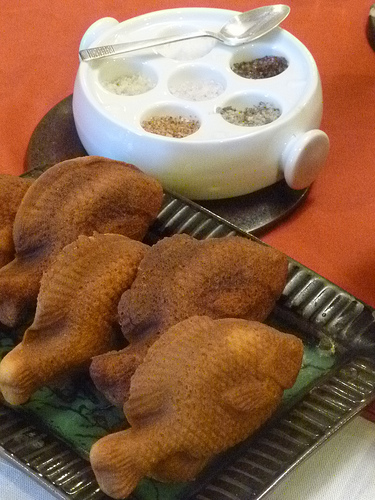
Heritage turkey.
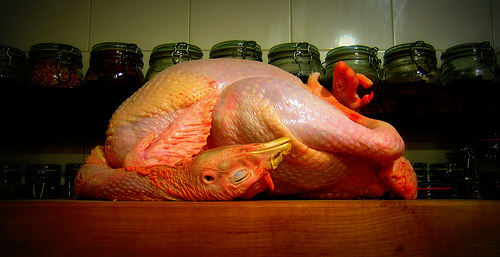
Marla. Maple basted breasts.
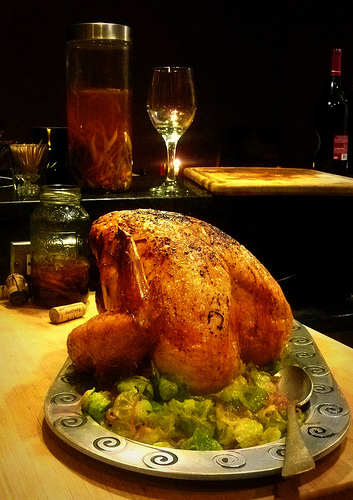
Ballotine. Fresh & dried cranberries, button mushrooms, pistachios and few chestnuts.
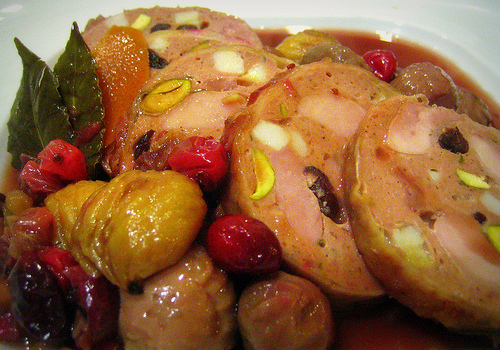
Cauliflower à la Polonaise. Romanesco, yellow & purple cauliflower. Cinnamon queen hen eggs, toasted bread crumbs and rosemary schmaltz.

Confit gizzards in saupiquet. Juniper scented urkey stock thickened by the liver.
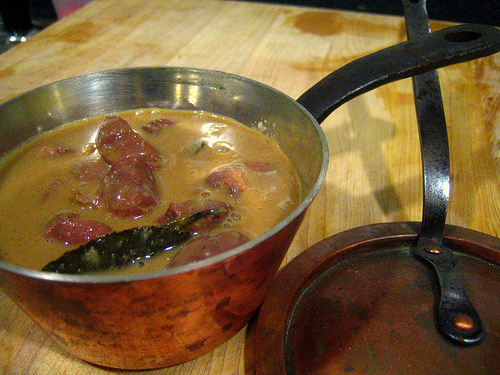
Pan coudoun. Candied quince baked in whole wheat bread.
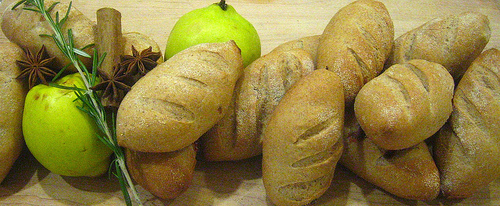
Pumpkin and ricotta frangipane tart. Honey & ricotta ice cream. –courtesy of a pastry savvy friend.
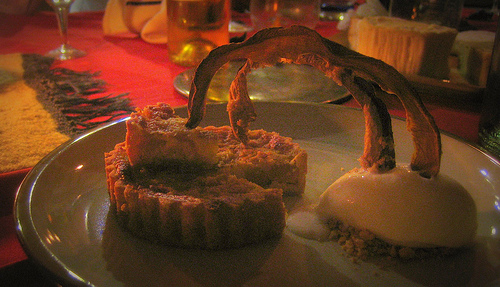
-
Cardamom, clove, black pepper, nutmeg, allspice, and a bit of fresh thyme. 80% turkey meat/20% pork belly (mostly fat), minced onion, plus some bacon ground in for good measure; milk/egg/breadcrumb mixture as well. They're really tasty. Going to finish in the oven in 1/2" of hot stock.
If you haven't already, might I recommend roasting the frikadelle from raw in a 450F oven and then finishing them in the stock until tender. Even and efficient coloration.
-
-
-
Hotel restaurant salaries are paid in part by the money generated from the hotel and it’s guests. Independent restaurants outside of hotels in the US that are worthy of a tipping debate rarely have unions. If union cooks in high-end restaurants were paid for their full hours, the resulting cost of the food would be inaccessible, prohibitive and a liability. Working in hotels, catering, hospitals is very different than working in smaller independent restaurants for reasons that “lifers” can calculate.
After reading the RDA of EdwardJ’s observations of the obvious and hopeless rhetoric from across the border, he should consider taking a couple thousand steps back to see the “capitalism” banner and understand that such a tipping model rewards proficient servers better than others and provides incentive. Until there are career servers in the US (theory X) -like in France (theory Y), where the noble standard of premium service and quality is second nature rather than the carrot and stick motivation in the land of plenty- the system will always demand financial rewards to inspire a proper work ethic. It is the product of greed, selfishness and the inherent American capitalist reflex to do better than thy neighbor, not share toys and look out for one’s self: consistent with the frigid-footed hostility towards hospitality tip pools.
As despicable and divisive as the system is, it makes those who benefit wealthier than the rest (promotion as well) while allegedly separating the wheat from the chaff. Waiving the almighty dollar is Uncle Sam’s entitled way of coaxing his notion of quality, which, based upon the original poster’s deliberation of an “expensive" $25 meal is being confused with value. Value is the abusive culture of cheap, obscenely processed foods (at the expense of the consumer’s nutrition, naturally) which has infected our food system and increased the disconnect. Quality is what you get can find in Europe, where there is pride without compromise in the goods that are raised, served and sold in a food culture which is embraced.
Uncle Sam wants to be coddled and massaged. He can be fawned over with the chance of offering money and will punish by withholding it. If servers are to make $10/hr here, that money is going to have to be subsidized by higher prices and those who take the time to tediously qualify tipping on a $20 steak dinner are not likely to happily absorb the increase without a chance to validate value: whether or not they were sufficiently spoiled.
Any dedicated epicurean traveler who dines for the pleasure of dining and researches the tradition of not eating weisswurst after noon or cheese before a meal should not be so abrasive and childish as to choose one dining custom over another for financially fueled criticism of established food industry ideology.
-
...I mean what kind of pretension to just say olli and expect all customers to know what that means...
Or you could ask. There really is no harm in engaging the server and finding out what scorzonera purée or a supion is. Finer restaurants are not compelled to dumb down their menus to satisfy the culinary ignorance of bashful diners –that’s Applebee’s condescending mission and what order-by-number value meals are for.
Melted is a direct translation of “fondue” which means that it has been left on the car's dashboard during a hot summer's day, or, in the context of alliums and crucifers, a vegetable that has been sweated in fat to the cusp of mushy.
-
-
...Would you say 'select Oscar Meyer varieties' or 'assorted Boar's Head and charcuterie'? I wouldn't, maybe Mina would.
Most retail stores and supermarket do. Their products are not geared towards fine dining restaurants. Boar’s Head to Olli’s association and assorted vs select is like matching apples to carburetors. Also, Olli is capitalized (though all the typeface is capitalized in the RN74 menu) making it a proper noun –either a producer, geographic region or certified appellation- and noteworthy (justifying price and showcasing the ingredient).
If comparing the industrial familiarity of Oscar Mayer (owned by Kraft) to a small scale artisinal operation such as Olli’s (or Fra’mani or La Quercia) which uses pastured animals, then the suggestion of quality is completely wasted.
-
Mignonette, in addition to the condiment, is a diminutive feminine suffix (ette) added to a “cute” (mignon) shape, be it airline liquor bottle, tiny cake or Smurf. There are thousands of arcane French culinary slang terms which vary from cook to cook or region and while their unfamiliarity may seem easy to dismiss as steer’s manure because the Google machine says they don’t exist, consider consulting a native speaker, or Google.fr.
Given the rich tradition and history of Virginia hams, it is reasonable for a restaurant to source its pork products from that area. Plenty of east coast restaurants import and cite west coast products (Fra’mani charcuterie, dairy products) or Michigan cherries which go in both directions and the provenance may not be recognized by the diners, or they just don’t give it any thought. In the context (it appears to be from RN74 in Seattle), Olli refers to either a producer or ingredient. It is unlikely that the Michael Mina group allows erroneous spelling on their menus, though there are a few missing or misplaced diacritics in the on-line version.
Toasting flour imparts flavor through caramelization of the natural sugars (Maillard reaction), much like boring brioche vs grilled brioche, bland bread crumbs vs toasted bread crumbs, raw vs roasted nuts or even humdrum spaghetti vs golden vermicelli. It is not uncommon for flour to be toasted when used as a thickener for traditional French braises or roux. While toasting the flour is not necessarily a trademark of speculaas, perhaps Matthew’s version uses it to distinguish it from others and highlights his understanding of flavor development and technique. Also, cookie recipes on a food-based game-show should not be revered as culinary scripture.
-
Rossini at Hugo Desnoyer; Paris, France.
$80/lb. Wrapped in sliced suet and caul fat. Sold (by the slice) within a few hours.
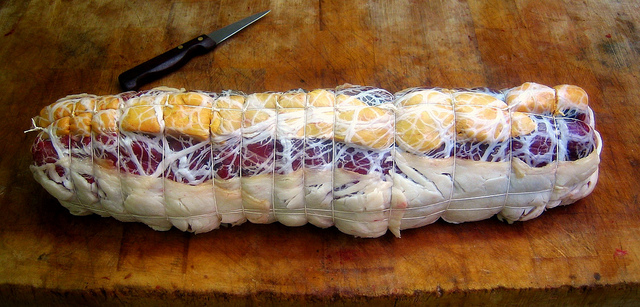
-
Pig's liver pâté.
Pastured pig's liver, belly, diced fatback, eggs, milk infused with warm spices and wrapped in bacon.
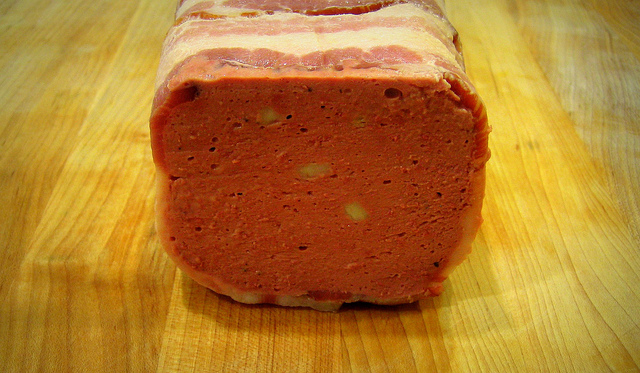
Hepatastically rich.

Livery delivery.
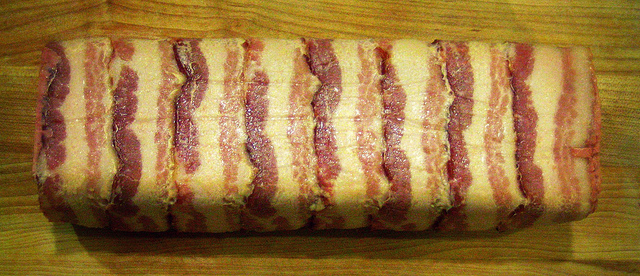
Bacon corset.
-
I would make that recipe again and maybe add some pistachios next time for texture and “visual interest”.
for a more unctuous pâté campagne, consider adding 10% cold cream to the mix (by weight of the forcemeat).
-
Not exactly a cucumber, though the grape-sized fruit can be treated as such. They were grown from seed in an equally diminutive garden plot and recently produced an astonishing amount of fruit. Pickled with white wine vinegar brine supplemented with aromatics. Higher seed & water to flesh ratio than I care for, though they mingle well with olives, raisins and toasted almonds.
Planet of the grapes
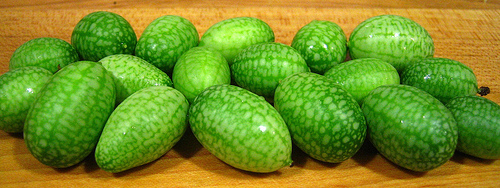
Bumper to bumper crop
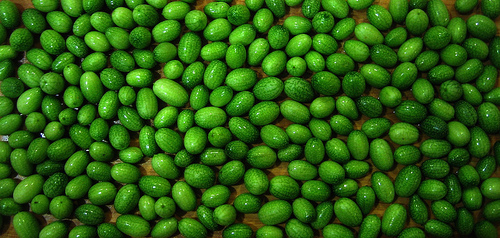
Itty bitty gherkin commission

Mucho melons
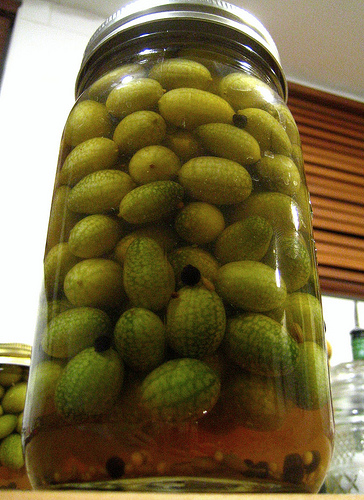
-
 1
1
-
-
Lamb shoulder, melon style.
Square cut Shenandoah lamb. Deboned, barded, trussed and gently roasted.
Square meal deal
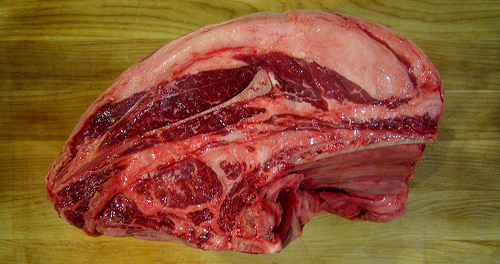
Fatback fever

Sheeping Beauty never had such savory bedding

Slamb dunk

-
 1
1
-
 1
1
-




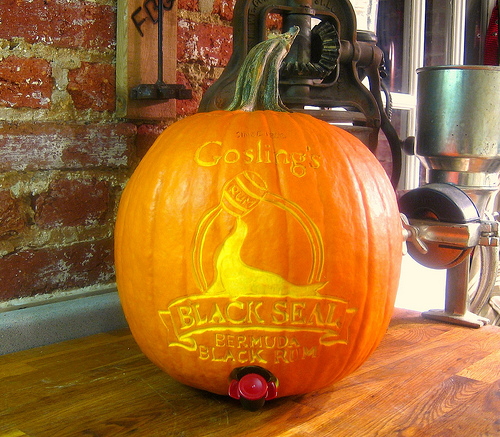
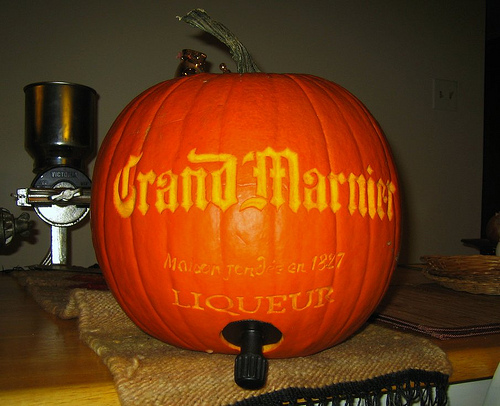

The Terrine Topic
in Cooking
Posted
Pork and Randall-Lineback Pâté en Croûte: Special Brandy Drenched Golden Raisins and Green Peppercorn Edition.
On Grapeness.
Fruit of the Loom zoom.